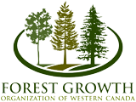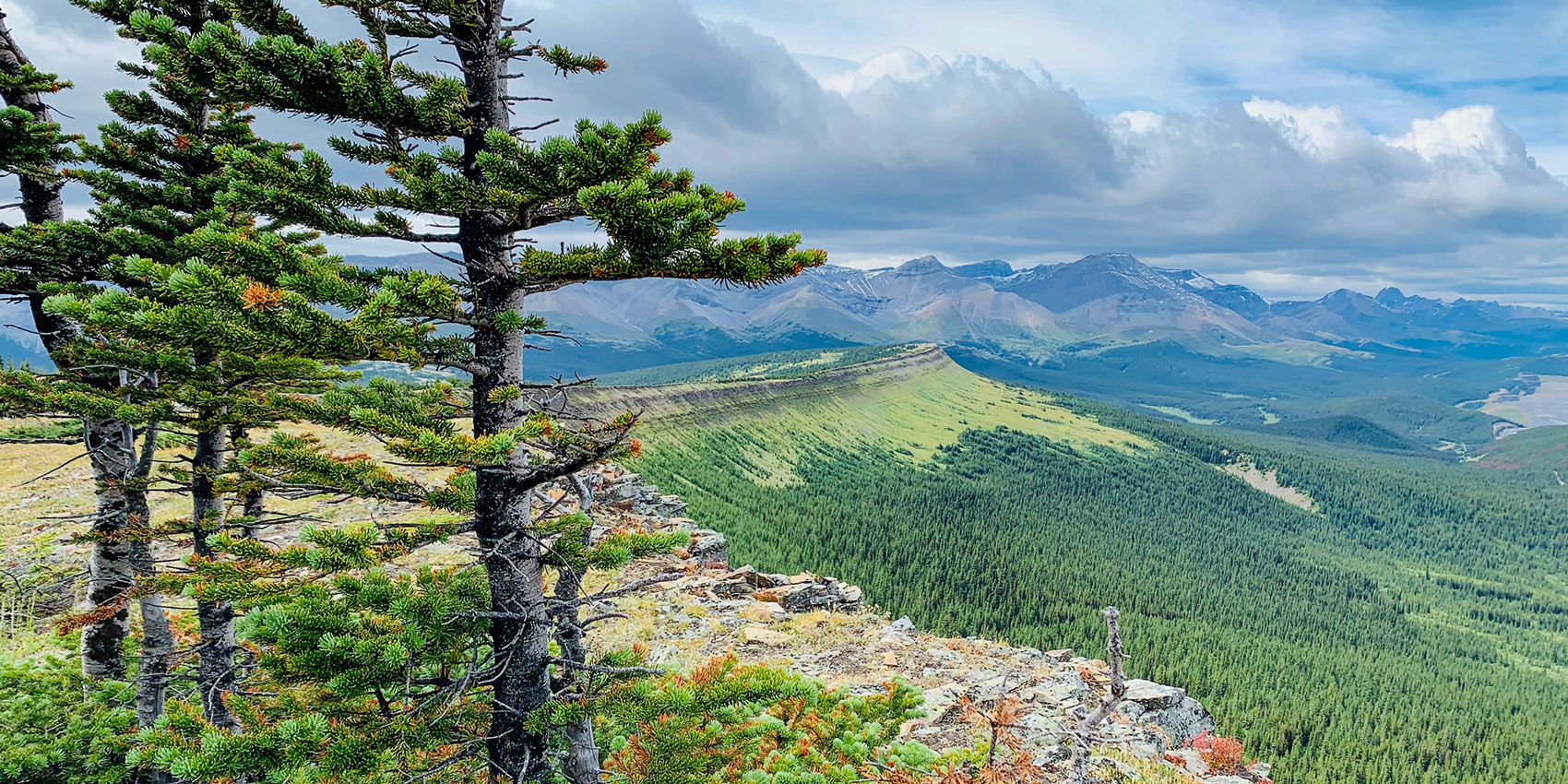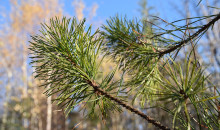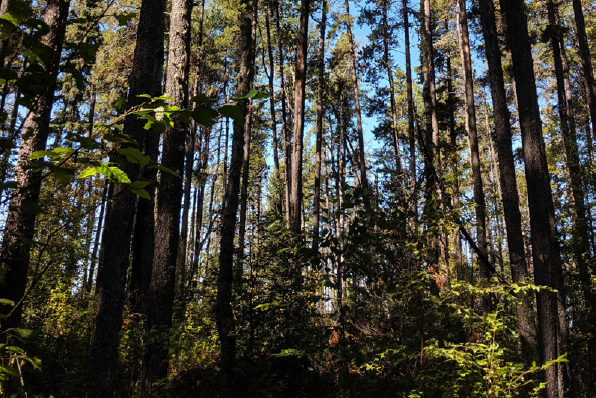When: Friday, February 12, 2021 – 1:00pm to Friday, April 23, 2021 – 2:00pm Where: Cost: None
This year, the Forest Growth Organization of Western Canada will be presenting its annual technical sessions online. These technical sessions qualify for the AAFMP Continuing Competence Program (CCP) as Category 1 credits. Attendees wishing to claim credits will be required to upload their hours to an AAFMP hosted reporting system.
Quick links
Playlist of archived presentations
March 5: Leverage Data Like You Mean It: Alberta’s Provincial Growth and Yield Initiative (PGYI)
March 12, 1-2pm: Does herbicide use influence long-term biodiversity in Alberta’s forests?
April 16: Bridging the gap: The Forestry Toolbox add-in for Microsoft Excel [POSTPONED]
February 12: Precommercial Thinning in Boreal Mixedwoods Increases Spruce Yields: Dynamic Aspen Density Experiment (DADE)
Ivan Bjelanovic and Phil Comeau
Abstract
The Dynamic Aspen Density Experiment (DADE) was initiated in 2008 to examine the response of white spruce to varying aspen densities. Objectives are to: 1) examine effects of aspen density on stand development; 2) examine effects of aspen density on survival and growth of white spruce; and, 3) evaluate the impacts of optimizing white spruce survival and growth on hardwood production. Results from the first 8 years of the study and MGM projections into the future will be presented with a discussion following the presentation.
Presenter Bios
Ivan completed a master’s degree in Forest Biology and Management at the University of Alberta under the supervision of Phil Comeau, and holds a Bachelor’s degree in Forestry from the University of Belgrade in Serbia. Currently, Ivan is working with the Canadian Forest Service on the design and development of the Wildland fire risk web application. Ivan’s involvement the DADE project was in the role of Research Assistant at the University of Alberta. At the UofA he worked on several projects within the Forest Stand Dynamics research group developing tools to predict ecosite-based forest productivity in addition to the evaluation of various silvicultural trials.
Phil is Professor Emeritus at the University of Alberta. He was Professor of Silviculture and Stand Dynamics at the UofA from 2000 to 2017. Phil has conducted research relating to competition dynamics, competition management, mixedwood management, silviculture, silvicultural systems, and Growth and Yield in western Canada. Phil has been the chair of the Western Boreal Growth and Yield (WESBOGY) project team since 2003 and has worked in the continued development of the Mixedwood growth model MGM. He was the recipient of the Canadian Institute of Forestry’s Tree of Life Award for the Rocky Mountain Section in 2014 as well as the CIF Scientific Achievement Award in 2016.
February 26: Surprising (and not so surprising) results from analysis of managed stand development as influenced by silviculture and other factors in Alberta: The Empirical Post-Harvest Study (EPH)
Robert Froese
Abstract
The Empirical Post-Harvest (or EPH) Project was designed to increase understanding of post-harvest (reforested) stand development in Alberta, taking advantage of newly available operational and research data from regenerated stands. Goals included examining stand condition to look for a silviculture “signal” in addition to other factors that drive stand development, and to examine stability in stand condition with time. Results suggest stand conditions develop as gradients where silviculture and succession signals are reliably found, but some traditional classification into strata seems to dilute the signal. Another goal was to see how silviculture propagates when young stand data are coupled with the GYPSY model. Some trends in the data seem at odds with the model, especially for spruce, which in retrospect might not be surprising. More work is needed!
Presenter Bio
Robert Froese is currently an Associate Professor in the School of Forest Resources and Environmental Science at Michigan Technological University and has been consulting in Alberta for a number of years. In June 2021 he will take on a new role as Endowed Chair in Forest Growth and Yield at the University of Alberta. He is a Certified Forester with the Society of American Foresters and remains a Registered Professional Forester in British Columbia. Robert grew up in Vancouver, British Columbia near the gates of the University of British Columbia, surrounded by the forests of Pacific Spirit Park. He has always been drawn to forests, and believes in the importance of knowledge in informing decisions people make about their place in the natural world. Robert is committed to the role that universities can have in promoting wide general good, through professional excellence, creative scholarship, and a sincere dedication to learning. This commitment has been shaped by his academic and professional experiences in British Columbia, Idaho, Michigan, and more recently in Alberta, and is the foundation of Robert’s work in forest biometrics, modelling, and growth and yield in his current position at Michigan Technological University and in his consulting work in Alberta.
March 5: Leverage Data Like You Mean It: Alberta’s Provincial Growth and Yield Initiative (PGYI)
Katrina Froese and Logan Purdy
Abstract
Alberta’s Provincial Growth and Yield Initiative (PGYI) was initiated in 2014 as a company-driven collaboration focused on creating a centralized, standardized source of high quality tree growth data. The initiative is intended to facilitate the development, calibration and validation of growth and yield models in Alberta and Western Canada. A centralised database, accessible through a secure web portal, houses permanent sample plot (PSP) data, which is populated by users following minimum standards and best practices to verify the quality of data submissions. Upon request, data is provided to modellers for use in research and development of growth models such as GYPSY and MGM used in Alberta. This presentation will review the history and purpose of PGYI, the importance of the initiative to growth and yield modelling, and will demonstrate some tools and processes developed to assist companies in submitting, evaluating and managing their data. Great things can be accomplished when you leverage data like you mean it!
Presenter Bios
Katrina Froese is a Resource Analyst with the Alberta Ministry of Agriculture and Forestry in Edmonton. She has nearly 20 years of experience in Alberta working as a consultant and a government employee. Katrina earned a Master’s degree in Forestry from the University of British Columbia with a focus on growth and yield. Kat is unashamedly a bit of a data nerd and nothing makes her happier than designing a new field sampling program.
Logan Purdy is a Resource Analysts at Forcorp Solutions Inc. (FORCORP) in Edmonton. Over the past two years , Logan has been involved in the maintenance, design, and user support of the Provincial Growth and Yield Initiative (PGYI) database. He completed a B.Sc. in Environmental and Conservation Sciences at the University of Alberta in 2016 and earned a dual-Masters of Science degree in Conservation and Land Management from Bangor University in Wales and Master of Forestry from the University of Alberta in 2018.
March 12 and March 19: Does herbicide use influence long-term biodiversity in Alberta’s forests?
Milo Mihajlovich
Note: Milo has graciously offered to give his presentation a second time the following Friday at 10am due to high demand.
Abstract
Herbicides are an effective tool in renewing forests in Alberta following harvesting through the reallocation of site resources to favor regenerating trees for fibre production. However, questions remain on the impacts of herbicide use on forest composition, structure, and plant biodiversity over time. There is a fair amount of information available during the regeneration phase (10-15 years post-harvest), but very little during the transition phase (20-40 years post harvest). This talk presents results from a long-term forest herbicide monitoring program, established in the mid-1990’s, to quantify impacts on biodiversity and wood fibre production 25 to 40 years post harvest. Biodiversity assessments included species richness, presence/abundance of site indicator species, Shannon Weiner diversity index and evenness. Wood fibre assessments included both standing total volume by species and projections of final volumes using both GYPSY (Growth and Yield Projection System) and the Mixedwood Growth Model (MGM). This talk will focus on the impacts of herbicide use on biodiversity, forest composition, and structure.
Supplemental reading material
Forest Herbicides and Biodiversity in Alberta Infographic
Presenter bio
Milo Mihajlovich is a native Albertan who graduated from the University of Alberta in 1976 with a bachelor’s in forestry sciences. Following a long career in reforestation, reclamation and woody plant management on pasture lands, Milo retired from the active practice of forestry as an active Alberta Registered Professional Forester in 2020. He has been employed with the Alberta Forest Service, Dow Chemical/Dow Elanco, Woods and Forests South Australia, Conservation and Land Management Western Australia, Ace Vegetation Control Service Ltd. For the past 24 years, Milo has worked as a consultant in post-establishment silviculture across Canada and the US Pacific Northwest. He has helped silviculturists develop sustainable, cost effective reforestation processes in the boreal environment while fostering First Nations engagement with forest managers in positive and meaningful ways.
March 19: Stand development following understory protection harvesting in Alberta: 10-yr results from the Strip Cut Understory Protection (SCUP) trial
Ivan Bjelanovic and Phil Comeau
Abstract
It is common to find abundant spruce regeneration in the understory of aspen dominated stands in northern Alberta. Mature aspen at 60 to 80 years of age is ready for harvest, while spruce trees are still too small to be utilized. Harvesting the aspen in strips, while protecting advanced spruce during harvest, allows adjacent uncut aspen to shelter these spruce from windthrow. The result could be shorter rotations, reduced reforestation costs, and possibly increases unit area timber production. The Mixedwood Management Association of Alberta established the Strip Cut Understory Protection (SCUP) trial in 2005 to provide data and information about this silvicultural practice. This presentation will focus on tree mortality, ingress, and spruce response to release during the first 10-years of the trial. Forecasts of future yield using the Mixedwood Growth Model (MGM) will also be presented.
Presenter Bios
Ivan completed a master’s degree in Forest Biology and Management at the University of Alberta under the supervision of Phil Comeau, and holds a Bachelor’s degree in Forestry from the University of Belgrade in Serbia. Currently, Ivan is working with the Canadian Forest Service on the design and development of the Wildland fire risk web application. Ivan’s involvement the DADE project was in the role of Research Assistant at the University of Alberta. At the UofA he worked on several projects within the Forest Stand Dynamics research group developing tools to predict ecosite-based forest productivity in addition to the evaluation of various silvicultural trials.
Phil is Professor Emeritus at the University of Alberta. He was Professor of Silviculture and Stand Dynamics at the UofA from 2000 to 2017. Phil has conducted research relating to competition dynamics, competition management, mixedwood management, silviculture, silvicultural systems, and Growth and Yield in western Canada. Phil has been the chair of the Western Boreal Growth and Yield (WESBOGY) project team since 2003 and has worked in the continued development of the Mixedwood growth model MGM. He was the recipient of the Canadian Institute of Forestry’s Tree of Life Award for the Rocky Mountain Section in 2014 as well as the CIF Scientific Achievement Award in 2016.
March 26: Linking Silviculture to Growth and Yield in Alberta: A new version of the Foothills Reforestation Interactive Planning System (FRIPSY2021)
Dick Dempster
Abstract
How do we know what combinations of reforestation practices will best meet forest management objectives? FRIPSY 2021 (a new version of the Foothills Reforestation Interactive Planning System) helps answer this question by quantitatively linking reforestation treatments (site preparation, planting, tending and pre-commercial thinning) in the Foothills natural region of Alberta to regeneration performance and long-term growth and yield. The development, features and rollout of the system will be described, along with a discussion of the potential role and limitations of such tools in forest management.
Presenter Bio
Dick Dempster obtained BSc and PhD degrees in Forestry at the University of Wales, and worked as an assistant conservator of forests in Jamaica, before emigrating to Canada in 1974. In Alberta he was initially a forestry planner for Simpson Timber Company in Whitecourt, and then an associate professor at the UofA Department of Forest Science, before establishing his own consulting business. Over the past 40 years, as a forestry consultant in Alberta, B.C., and the U.K., he has worked on and lead numerous projects in forest policy, inventory, planning and development. He has worked both domestically (Alberta, B.C., Saskatchewan and other Canadian provinces) and internationally (in China, Indonesia, south America, southern Africa and the Caribbean). In 1999 he became Director of the newly formed Foothills Growth and Yield Association (FGYA), in which capacity he continued until 2007, when he returned to the UK. Since then, his main involvement and interest in Alberta has been researching post-disturbance stand development with the FGrOW foothills pine project team.
April 16: Bridging the gap – The Forestry Toolbox add-in for Microsoft Excel [POSTPONED]
Gyula Gulyas
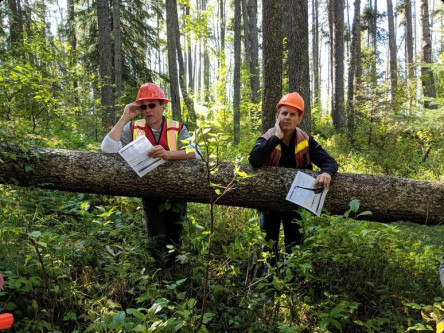
Abstract
Forestry has progressively become more quantitative over the past 20 years. Advancements in technology combined with large amounts of data, sophisticated modeling techniques and an ever-increasing level of details tracked in regulatory processes, require today’s forestry professionals to possess a complex technical knowledge and understanding. With the support of FGrOW, we developed a ‘Forestry Toolbox’ in Microsoft (R) Excel (R) that extends the complex technical knowledge and functions that forestry professionals will find useful. The Toolbox provide seamless access to several forestry models and functions while hiding all the complexity in the background. While “Green side up!” clearly no longer cuts it, we should strive for standardization and simplification of processes whenever possible. This will allow foresters to focus on what they do best while still providing access to technology and models to support decision making in contribution to the betterment of Alberta’s forests.
Presenter Bio
Gyula completed his Master’s degree in Forest Management at the University of British Columbia and holds a Forest Engineering degree from the University of Sopron in Hungary. He has been working in Alberta in the area of Growth and Yield for the past 25 years and has been involved in the development of numerous Forest Management Plans in the Province. In addition to forestry projects, Gyula has developed Microsoft (R) Excel (R) solutions for clients globally including a small police station in Brazil to teams of researchers in Antarctica.
April 23: What are the benefits of site preparation, planting, weeding, and pre-commercial thinning on Lodgepole Pine performance in the Foothills of Alberta?
Dick Dempster
Abstract
The Foothills Growth and Yield Association (FGYA) established the Regenerated Lodgepole Pine (RLP) trial in 2000 to monitor, under experimentally controlled conditions, the effects of planting, tending, and pre-commercial thinning on the development of lodgepole pine stands following harvesting and planting in the Alberta foothills. The FGYA became FGrOW’s Foothills Pine Project in 2015, which continued and expanded upon the initial trial. All RLP plots were measured repeatedly during the first 18 years, with sub-sampling of seedlings and saplings facilitating detailed analysis and modelling over the entire regeneration phase. The RLP trial was augmented by measurement of a complementary trial to examine the effects of harvesting and site preparation methods 17 years after harvest. The project also investigated regeneration over a ten-year period following Mountain Pine Beetle disturbance on permanent sample plots in fire-origin stands. Now that the RLP trial has entered the growth phase and regeneration modelling has been completed, the measurement interval and sampling procedures are being adjusted to allow cost-effective monitoring throughout the remainder of the rotation.
The seminar will describe the design and latest results of these studies, discuss their implications for forest management, and make recommendations for ongoing monitoring of treatment effects.
Presenter Bio
Dick Dempster obtained BSc and PhD degrees in Forestry at the University of Wales, and worked as an assistant conservator of forests in Jamaica, before emigrating to Canada in 1974. In Alberta he was initially a forestry planner for Simpson Timber Company in Whitecourt, and then an associate professor at the UofA Department of Forest Science, before establishing his own consulting business. Over the past 40 years, as a forestry consultant in Alberta, B.C., and the U.K., he has worked on and lead numerous projects in forest policy, inventory, planning and development. He has worked both domestically (Alberta, B.C., Saskatchewan and other Canadian provinces) and internationally (in China, Indonesia, south America, southern Africa and the Caribbean). In 1999 he became Director of the newly formed Foothills Growth and Yield Association (FGYA), in which capacity he continued until 2007, when he returned to the UK. Since then, his main involvement and interest in Alberta has been researching post-disturbance stand development with the FGrOW foothills pine project team.
